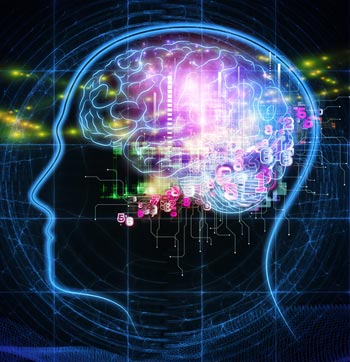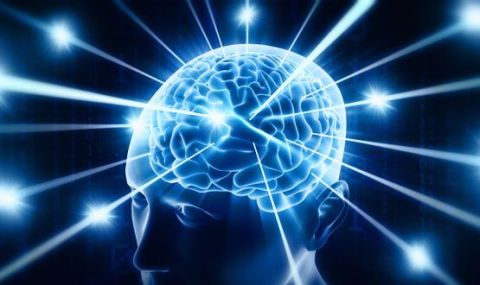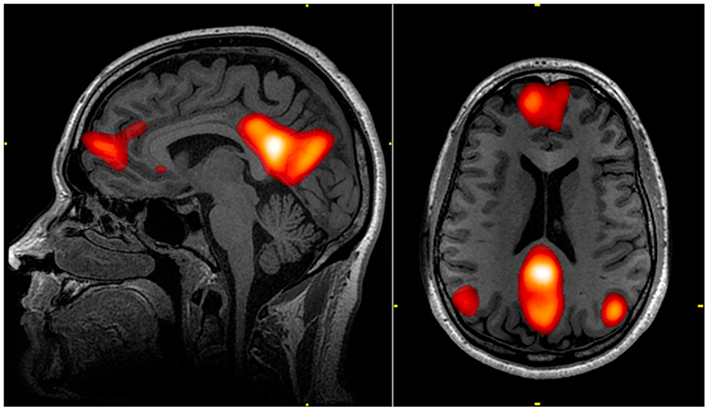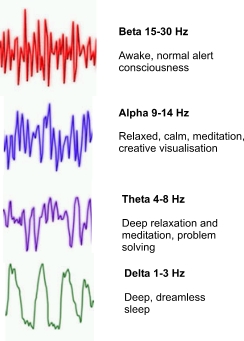Talk:Yoga Nidra
This page has not been fully approved by the PsychonautWiki administrators. It may contain incorrect information, particularly with respect to dosage, duration, subjective effects, toxicity and other risks. It may also not meet PW style and grammar standards. |
Yoga Nidra, also known as yogic sleep, is a highly advanced, and extremely rewarding form of meditation- involving the practitioner entering deep sleep-, while retaining full conscious awareness.
This is not to be confused with another ancient practice called lucid dreaming or dream yoga occurring during R.E.M. sleep. [1]. Yoga Nidra has been practiced for centuries.

Etymology
Yoga Nidra is Sanskrit for yogic sleep, or conscious deep sleep.
Yoga Nidra exclusively refers to consciousness during dreamless sleep, or delta wave sleep.

Scientific Explanation
Consciousness is continuous. There is no period of sleep with zero brain activity. Sleep consists of varying states of activity, proven by EEG. Even fast brainwaves can be detected in the hippocampus in deep sleep. [2]-
Sleep has been an endless source of fascination of scientists, philosophers, and psychonauts for centuries..[3] Scientists believe specialized cells in the hypothalamus and brain stem cause the brain to transition towards Slow Wave Sleep. [4]
Brain scans indicates higher brain activity in visual and auditory regions correlate with predormital hallucinations.[5] Higher brain activity as the hypothalamus and brain stem shut down others, may explain the paradoxical states during the earliest stages of Yoga Nidra. [6]

Benefits
According to practitioners, Yoga Nidra is one of the deepest and most enriching forms of meditation- it's all about learning to let go, completely relinquishing oneself from the limitations of the conscious mind. Anyone can do it at any time, it has tremendous benefits for coping with stress, and practitioners learn a great deal about themselves, and what makes them relax. [7]

Intention
Coming up with a sanskalpa, or intention, is a common practice in Yoga Nidra. This could be an issue one seeks to resolve, or a powerful desire for insight. Psychologists claim that goal setting is very effective.
Posture
Meditative postures in Yoga Nidra varies. Many people enjoy lying on their backs to enhance concentration and alertness, called savansa- the corpse pose, but one may choose whatever position feels the most natural, and conducive to sleep. Some Tibetan monks recommend lying on your side.

Relaxation
A Yoga Nidra practitioner usually begins by directing his conscious attention to the autonomous functions of the body, such as breathing, heart rate, and tactile sensations. He must find the perfect balance between drowsiness and alertness- requiring tremendous patience.
Hallucinations
Hallucinations are common on the path towards achieving Yoga Nidra. They are frequently called 'hypnagogic hallucinations, or predormital hallucinations. [8] They may affect any sensory modality; including visual, auditory, tactile, olfactory, gustatory, and proprioception.

Dreamlets
The Yoga Nidra practitioner gets to observe the brain as it creates dreams. He may experience 'miniature animations' on the sleep threshold that gradually increase in complexity, called dreamlets (means 'little dream'). [9].

Lucid Dreams
Although not exclusive to Yoga Nidra, lucid dreaming can occur during sleep meditation. This offers immense freedom and further enriches the practitioners life.
Deep Sleep
Yoga Nidra experts are conscious in all sleep states' this includes deep sleep. Cognitive scientists say there doesn't seem to be any cessation of activity in sleep, even deep sleep. There always appears to be complex, measurable brain activity. Scans have even revealed rapid frequency brainwaves in the hippocampus during deep sleep. [10]. Conscious deep sleep, or Yoga Nidra is said to be one of the most profound states of consciousness imagineable.
Philosophy and Religion
Yoga Nidra has been practiced in Hinduism and Bhuddism for many years. This meditation overlaps with their philosophy, now corroborated by scientific research, [11] that sleep is a very active state- with no clear period we could define as pure unconsciousness.
( )
)
Phenomenonology
The experience of Yoga Nidra is nothing short of profound- and is regarded as the purest state of consciousness imagineable.
In deep sleep, delta brain waves only have a frequency of 0.5 to 3.5 hertz. [12] The meditator is only aware of pure darkness, and a vague sense of time.
Misconceptions
The phrase Yoga Nidra is often falsely used, and advertised. in the following contexts:
1. The state between wakefulness and sleep.
2. Any form of meditation performed lying on the back.
A person hasn't achieved true Yoga Nidra until he has passed through the dream state, into the deep sleep state.
Neuroscience
PET scans of Bhuddist Monks performing Yoga Nidra showed remarkable activity in the visual regions of the brain. [13] This focused activity was sustained with "no effort" on part of the monks.
The PET scans on the brains of Bhuddist Monks reveals something critical about the zen mindset. A clear mind is not something one 'work towards'- but arises spontaneously as a result of practicing meditation, and Yoga Nidra.

Neurophysiology
There are 5 types of brainwaves: gamma, beta, alpha, theta, and delta. [14].Yoga Nidra involves being conscious during the most restorative and deepest states conceivable.
- Delta waves characterize the deepest, restorative sleep- the quality of sleep experienced in Yoga Nidra. (0-4 Hz)
- Theta waves are correlated with creative, emotional, insightful and hypnotic states typical of deep meditation and dreaming. (4-8 Hz)
- Alpha waves are present during deep relaxation, and are a bridge towards the theta wave states. (8-12 Hz)
- Beta waves usually characterize typical waking consciousness- and correspond to feeling alert. (12-40 Hz)
- Gamma waves are associated with tasks requiring higher cognition and concentration. (40-80 Hz)

Neuroplasticity
Meditation shapes the brain. This is supported by many studies. [15]. In the long term, it increases the density of gray matter in the hippocampus, and frontal cortex. According to EEG data, experienced meditators can alter their brain waves with zero effort.
Research into how meditation shapes the brain is an intriguing avenue of neuroscience, with new findings occurring all the time. The more we learn, the more we ponder the fascinating architecture of the human brain.

External links
References
- ↑ https://www.susanblackmore.co.uk/oldsite/Articles/si91ld.html Lucid Dreaming- Awake In Your Sleep?
- ↑ https://qz.com/852486/cognitive-science-backs-up-the-ancient-indian-philosophy-that-were-conscious-even-in-deep-sleep/ Cognitive Science Backs Up the Ancient Philosophy that We are Conscious Even In Deep Sleep
- ↑ http://www.centerforsoundsleep.com/sleep-disorders/stages-of-sleep/ Stages of Sleep
- ↑ https://www.scientificamerican.com/article/what-happens-in-the-brain-during-sleep What Happens in the Brain During Sleep?
- ↑ http://mentalhealthdaily.com/2015/05/16/hypnagogic-hallucinations-causes-types-treatment/ Causes of Hypnagogic Hallucinations
- ↑ https://qz.com/852486/cognitive-science-backs-up-the-ancient-indian-philosophy-that-were-conscious-even-in-deep-sleep/ Cognitive Science Backs Up the Ancient Philosophy that We are Conscious Even In Deep Sleep
- ↑ https://yogainternational.com/article/view/5-benefits-of-yoga-nidra 5 Benefits of Yoga Nidra
- ↑ http://www.sleepeducation.org/sleep-disorders-by-category/parasomnias/sleep-hallucinations/overview-facts Sleep Halluciinations
- ↑ https://en.oxforddictionaries.com/definition/dreamlet Definition of Dreamlet
- ↑ https://qz.com/852486/cognitive-science-backs-up-the-ancient-indian-philosophy-that-were-conscious-even-in-deep-sleep/ Cognitive Science Backs Up the Ancient Philosophy that We are Conscious Even In Deep Sleep
- ↑ https://qz.com/852486/cognitive-science-backs-up-the-ancient-indian-philosophy-that-were-conscious-even-in-deep-sleep/ Cognitive Science Backs Up the Ancient Philosophy that We are Conscious Even In Deep Sleep
- ↑ http://www.centerforsoundsleep.com/sleep-disorders/stages-of-sleep/
- ↑ http://www.bbc.com/news/world-us-canada-12661646
- ↑ https://www.scientificamerican.com/article/what-is-the-function-of-t-1997-12-22/
- ↑ http://meditation-research.org.uk/2014/03/meditation-and-neuroplasticity-five-key-articles/

